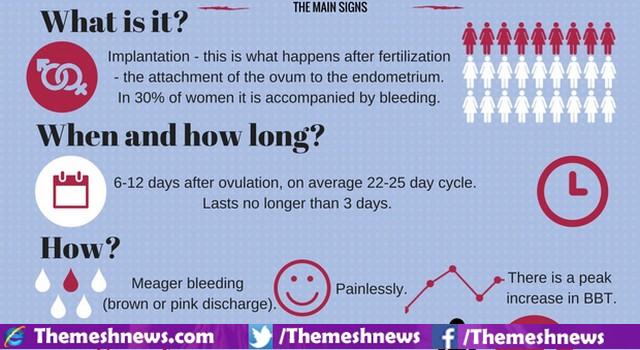Implantation draining normally happens in the vicinity of six and 12 days after origination, when the treated egg connects to the coating of your uterus. A few ladies mix up it for their general period since it can seem to be comparative and come around at the time you’d expect your typical cycle.
How might you tell if WHAT IS IMPLANTATION BLEEDING by Pobby What’s more, when is draining brief comment worried about?

How Normal Is It?
As per Dr. Sherry Ross, OB/GYN at Provision Holy person John’s Wellbeing Center in Santa Clause Monica, California, and implantation draining is genuinely normal and happens in around 30 percent of pregnancies. Much of the time, it is the primary indication of pregnancy.
Dr. Linda Burke-Galloway, M.D., M.S., F.A.C.O.G., and creator of “The Brilliant Mother’s Manual for a Superior Pregnancy,” says, “most ladies believe they’re having a brief period that month, when actually, it’s implantation dying. Numerous ladies don’t understand that they are pregnant until the point when they take a pregnancy test.”
To what extent Does It Last?
Not at all like a standard period, has Dr. Burke-Galloway said implantation draining is fleeting, typically enduring close to 24 to 48 hours, which is the measure of time it takes for the prepared egg to end up embedded into the coating of the uterus.
What Does It Resemble?
Average menstrual draining as a rule goes on for three to five days, beginning heavier and after that helping up. Blood from implantation draining is normally dim dark colored or dark, which implies it’s more seasoned blood, albeit in some cases it can be pink or red too. It’s additionally not an overwhelming stream. You may see some light spotting of a couple of drops to marginally bigger sums.
It can be troublesome for ladies to know the distinction between implantation draining and a normal period, says Dr. Ross, since 50 percent of pregnancies are spontaneous, and side effects can be sufficiently comparable to be mixed up.
Here are some significant contrasts.
Consistent period:
endures 3 to 7 days, with 2 to 3 days of splendid red blood
draining begins substantial and helps up toward the end
more serious uterine cramping, which can occur before draining and proceed for 2 to 3 days
Implantation dying:
doesn’t normally keep going for more than 24 to 48 hours
draining has a tendency to be light and generally dark colored, pinkish, or dark
substantially more gentle (or nonexistent) uterine cramping
At the point when Would it be a good idea for you to Stress?
All seeping amid pregnancy is viewed as anomalous. Specialists consider it important and urge pregnant ladies to report it. Despite the fact that not all draining is a crisis or an indication of inconveniences, your specialist will probably need to perform tests, for example, a vaginal ultrasound, to make sense of the reason.
As indicated by Dr. Burke-Galloway, splendid red blood implies you have dynamic dying, particularly on the off chance that you are passing blood clumps and are in torment. This could be an indication of a premature delivery or ectopic pregnancy and requires prompt therapeutic consideration.
In the event that the draining is occurring amidst the night and appears to be perilously industrious or overwhelming, at that point call your specialist’s training to address the available to come back to work staff,” says Dr. Joshua Hurwitz, OB/GYN and conceptive endocrinologist at Regenerative Medication Partners of Connecticut. “In any earnest circumstance, you can simply go to the crisis space to be assessed.”
Dr. Ross includes, “Each pregnant lady has a 25 percent shot of having an unnatural birth cycle. At the point when the draining begins to resemble a substantial period with blood clusters and serious menstrual-like cramping, at that point it’s a great opportunity to be worried that you are encountering an unsuccessful labor. In the event that overwhelming draining and cramping is related with tiredness or dazedness, it’s vital to contact your social insurance supplier to have a pelvic ultrasound, blood tally, and beta HCG (human chorionic gonadotropin) to make the right conclusion.”
